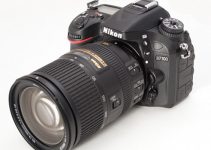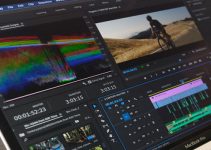You can easily find a reliable camera slider for your production for a reasonable amount of money these days. However, if you are working on a really tight budget maybe it’s better to consider building one on your own. The main drawback of the majority of DIY sliders out there, though, is that usually they provide meager results in terms of performance and build quality, to say the least.
Fortunately, the guys from DIY Perks have found an interesting workaround showcasing how you can not only build a super smooth and sturdy camera slider, but it will cost you less than $50. It also comes with one very important advantage. Thanks to the roller system employed the carriage remains locked to rails at all angles, even when you are using the slider upside down to get extremely low shots such as the ones demonstrated in the video below.
The first thing you need to tackle with this build is the slider’s rails. These are going to be made out of standard copper pipes which generally are easy to be found in your local hardware store. They need to have a diameter that matches the rollers you will be using for the build. The length of the pipes obviously defines the slider’s reach, so it can be scaled up or down to suit your needs. You will also need to polish up the pipes for best and smoothest results as shown in the video above.
The next step of the process would be building the platforms of the slider. In this particular case as the DIY Perks team suggests these can be cut out of 6mm thick MDF fibre board, as it’s cheap and very rigid. During this step of the process prepare yourself for some extensive drawing, printing, drilling, cutting and painting.
Once the rails are completed it’s time to start working on the slider itself. Again, first you need to print the templates provided by DIY Perks, then cut and drill the MDF pieces accordingly. Keep in mind that the platform is designed to hinge so that the camera always remains level, thus some additional work on the mechanism that enables this functionality will be also required in case you want to implement this feature in your DIY slider
Moving further, you will need to attach the rollers and the tripod head on the MDF pieces (that also need to be build up in advance) using some M8 screws and washers. The DIY Perks even provided an Ebay link for international purchase of the rollers they’ve used for this setup.
Finally, you can slide the whole unit onto the rails and adjust the rollers so that they fit perfectly between the pipes. Ideally, if you’ve done everything precisely, they will need to be ever so slightly loose as this allows for maximum fluidity which in this case is your final goal.
Typically, there are many other smaller bits and pieces of the building process covered in the video that needs to be considered and put in place to turn this into a working full-fledged slider system, but if you have enough time and patience to spend you will end up with building a professionally looking slider that also delivers super smooth camera movements for your production for less than $50. Just make sure you follow precisely the detailed instructions included in the video above.
[source: DIY Perks]
Disclaimer: As an Amazon Associate partner and participant in B&H and Adorama Affiliate programmes, we earn a small comission from each purchase made through the affiliate links listed above at no additional cost to you.
Claim your copy of DAVINCI RESOLVE - SIMPLIFIED COURSE with 50% off! Get Instant Access!




